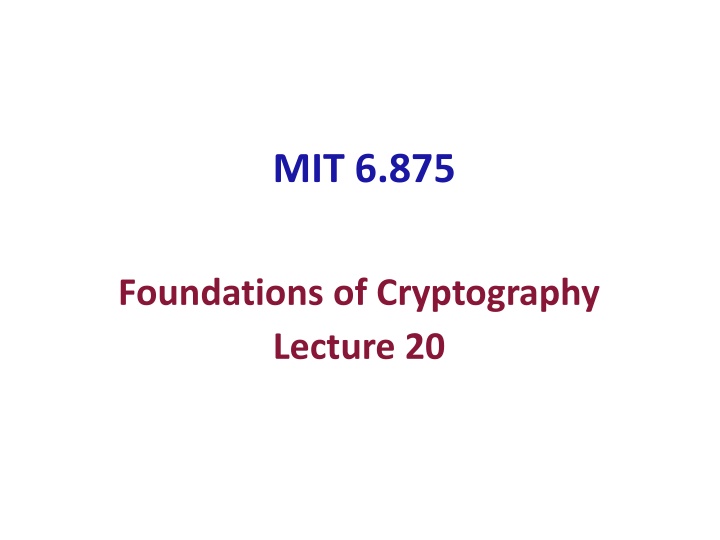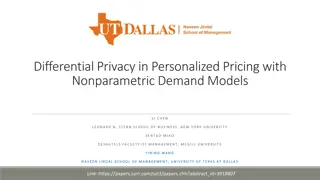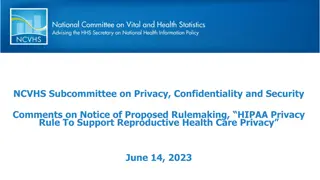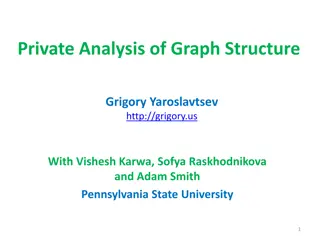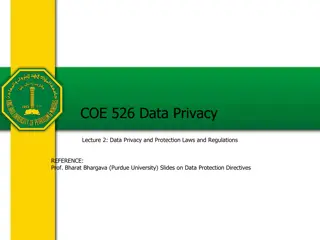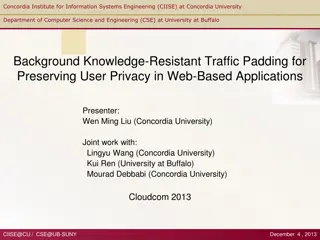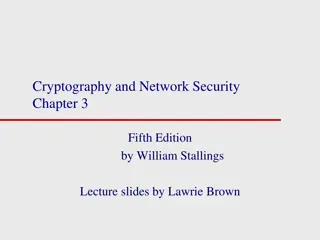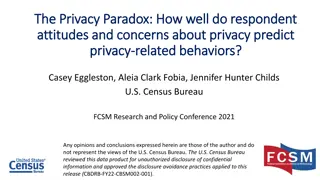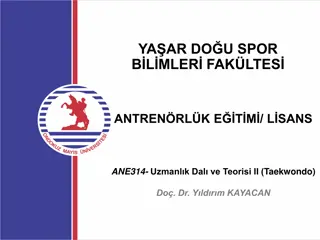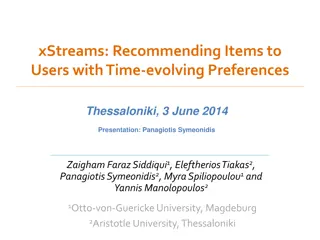Enforcing User Privacy Preferences in Ad-Block War
The research explores the challenges faced by the ad-supported economic model due to intrusive ads and how fine-grained options can empower users to control tracking preferences. It emphasizes the need for technical enforcement over self-regulation to revive the ad-supported economy.
Download Presentation

Please find below an Image/Link to download the presentation.
The content on the website is provided AS IS for your information and personal use only. It may not be sold, licensed, or shared on other websites without obtaining consent from the author.If you encounter any issues during the download, it is possible that the publisher has removed the file from their server.
You are allowed to download the files provided on this website for personal or commercial use, subject to the condition that they are used lawfully. All files are the property of their respective owners.
The content on the website is provided AS IS for your information and personal use only. It may not be sold, licensed, or shared on other websites without obtaining consent from the author.
E N D
Presentation Transcript
MIT 6.875 Foundations of Cryptography Lecture 20
Security against Malicious (Active) Adversaries
Secure Two-Party Comp: New Def (possibly randomized) ? ?,?;? = (???,?;? ,??(?,?;?)) Input: ? Input: ? Alice Bob There exists a PPT simulator ???? such that for any ? and ?: (?????,???,? ,?(?,?)) (?????(?,?),?(?,?)) i.e. the joint distribution of the view and the output is correct
Malicious Parties: Issues to Handle 1. Input (In)dependence: A malicious Alice could choose her input to depend on Bob s, something she cannot do in the ideal world. Example: ? ?,? ,? = ( ,?? + ?) 2. Randomness: A malicious Bob could choose his random string in the protocol the way she wants, something she cannot do in the ideal world. Example: our ?? protocol unavoidable 3. (Un)fairness: A malicious party could block the honest party from learning the output, while learning it herself. 4. Deviate from Other Protocol Instructions.
The GMW Compiler Theorem [Goldreich-Micali-Wigderson 87]: Assuming one-way functions exist, there is a general way to transform any semi-honest secure protocol computing a (possibly randomized) function F into a maliciously secure protocol for F.
Input Independence 1. Input (In)dependence: A malicious party could choose her input to depend on Bob s, something she cannot do in the ideal world. Solution: Each party commits to their input in sequence, and provides a zero-knowledge proof of knowledge of the underlying input.
Solution: Coin-Tossing Protocol 2. Randomness: A malicious party could choose her random string in the protocol the way she wants, something she cannot do in the ideal world. Def: Realize the functionality ? 1?,1?= (?,???(?)). ???(?1) ?2 Output? = ?1 ?2 Output(??? ?1,?2)
Zero Knowledge Proofs 4. Deviate from Other Protocol Instructions. Solution: Each message of each party is a deterministic function of their input, their random coins and messages from party B. When party A sends a message ? = ?(??,??,????), they also prove in zero-knowledge that they did so correctly. That is, they prove in ZK the following NP statement: ?,????,????,???? : ??,?? s.t. ? = ? ??,??,???? ???? = Com ?? ???? = Com ??
Optimization 1: Preprocessing OTs Random OT tuple (or AND tuple, or Beaver tuple after D. Beaver): Alice has (?,??) and Bob has (?,??) which are random s.t. ?? ??= ??. Theorem: Given O(1) many random OT tuples, we can do OT with information-theoretic security, exchanging O(1) bits.
Optimization 2: OT Extension Theorem [Beaver 96, Ishai-Kushilevitz-Nissim-Pinkas 03]: Given O(?) many random OT tuples, we can generate ? OT tuples exchanging O(?) bits --- as opposed to the trivial O(??) bits --- and using only symmetric-key crypto.
Complexity of the 2-party solution Number of OT protocol invocations = 2 #??? gates Can be made into O(#inputs ?): Yao s garbled circuits Number of rounds = AND-depth of the circuit Can be made into O(1) rounds: Yao s garbled circuits Communication in bits = ?(#??? ? + #???????) Can be made into O(? #inputs) using FHE: but FHE is computationally more expensive concretely.
? ? -Round Secure Two-Party Computation (on the board)
